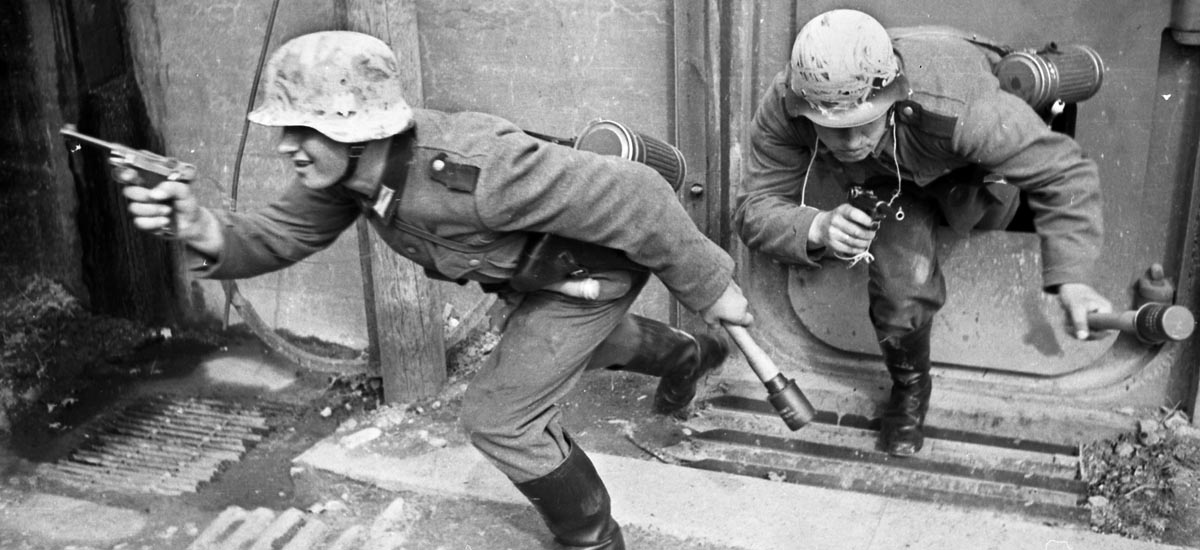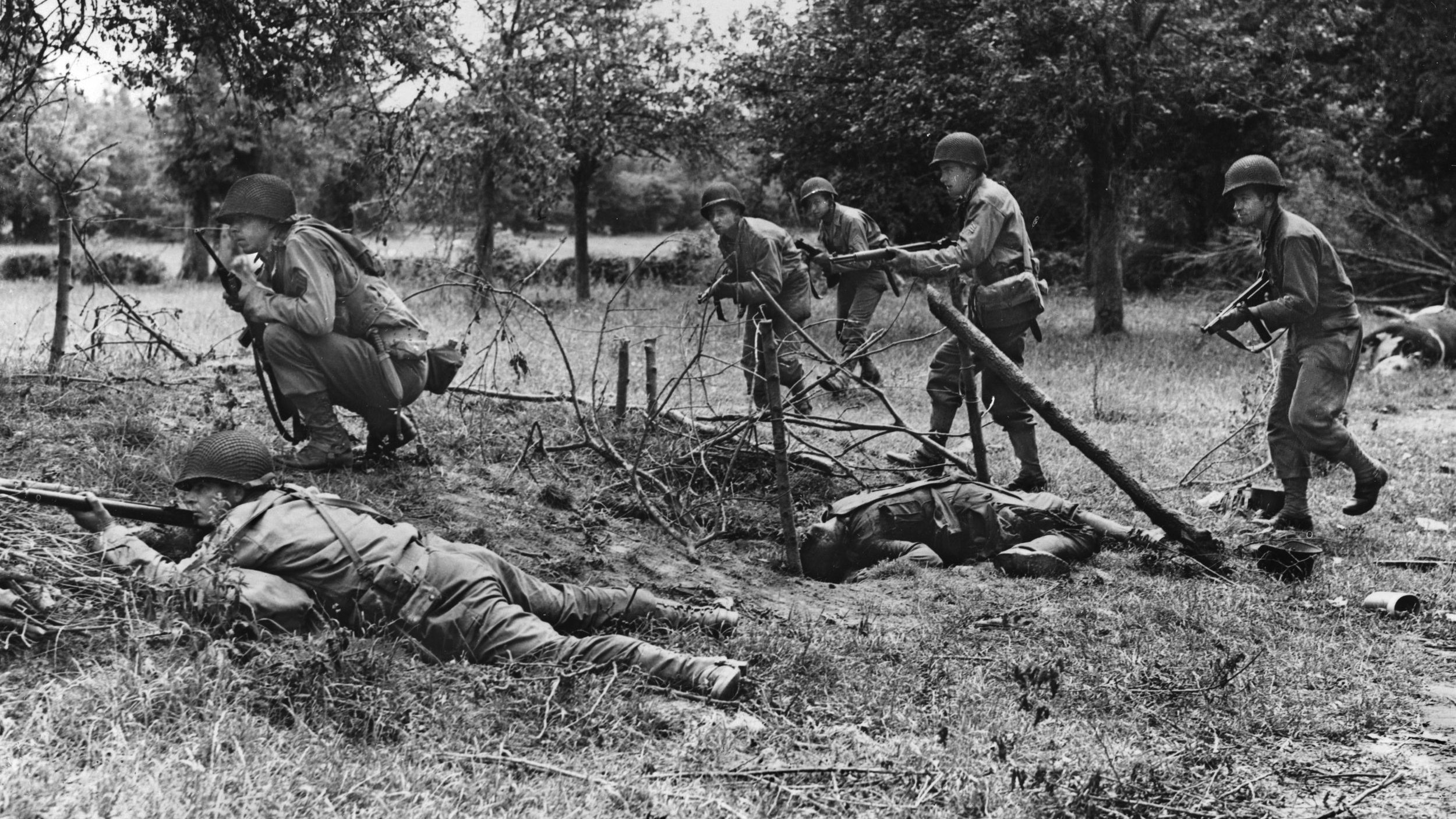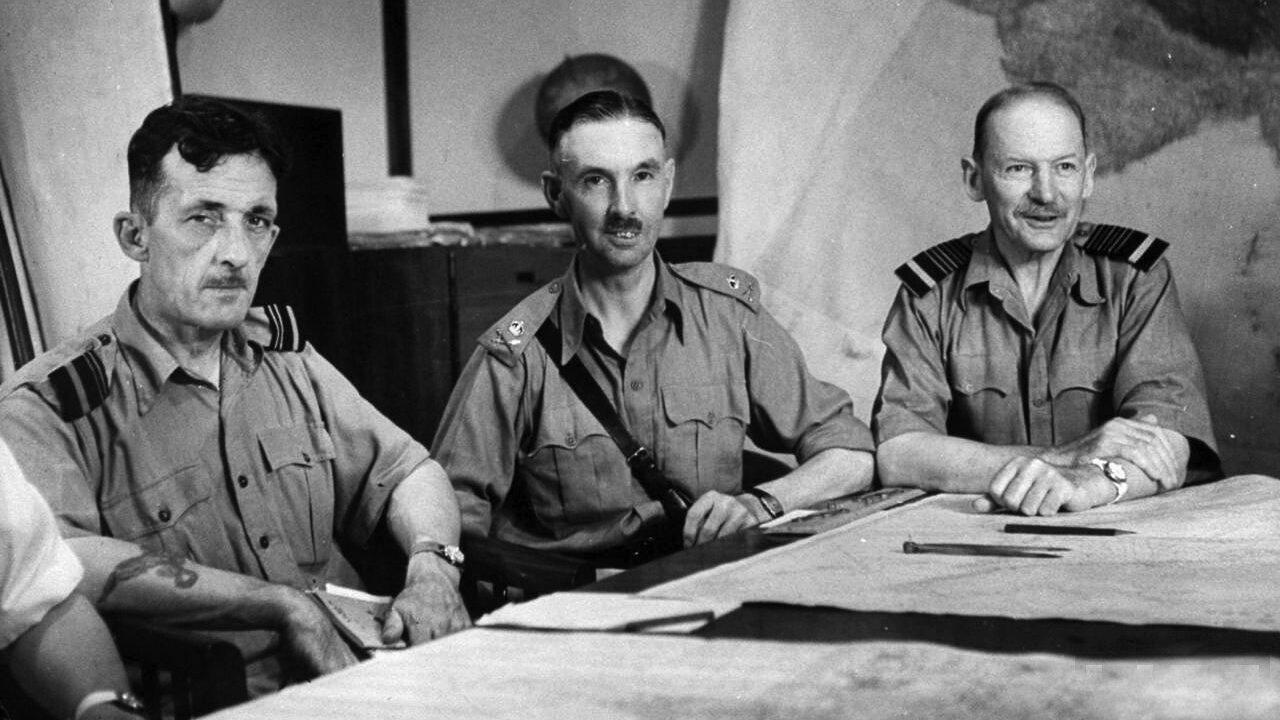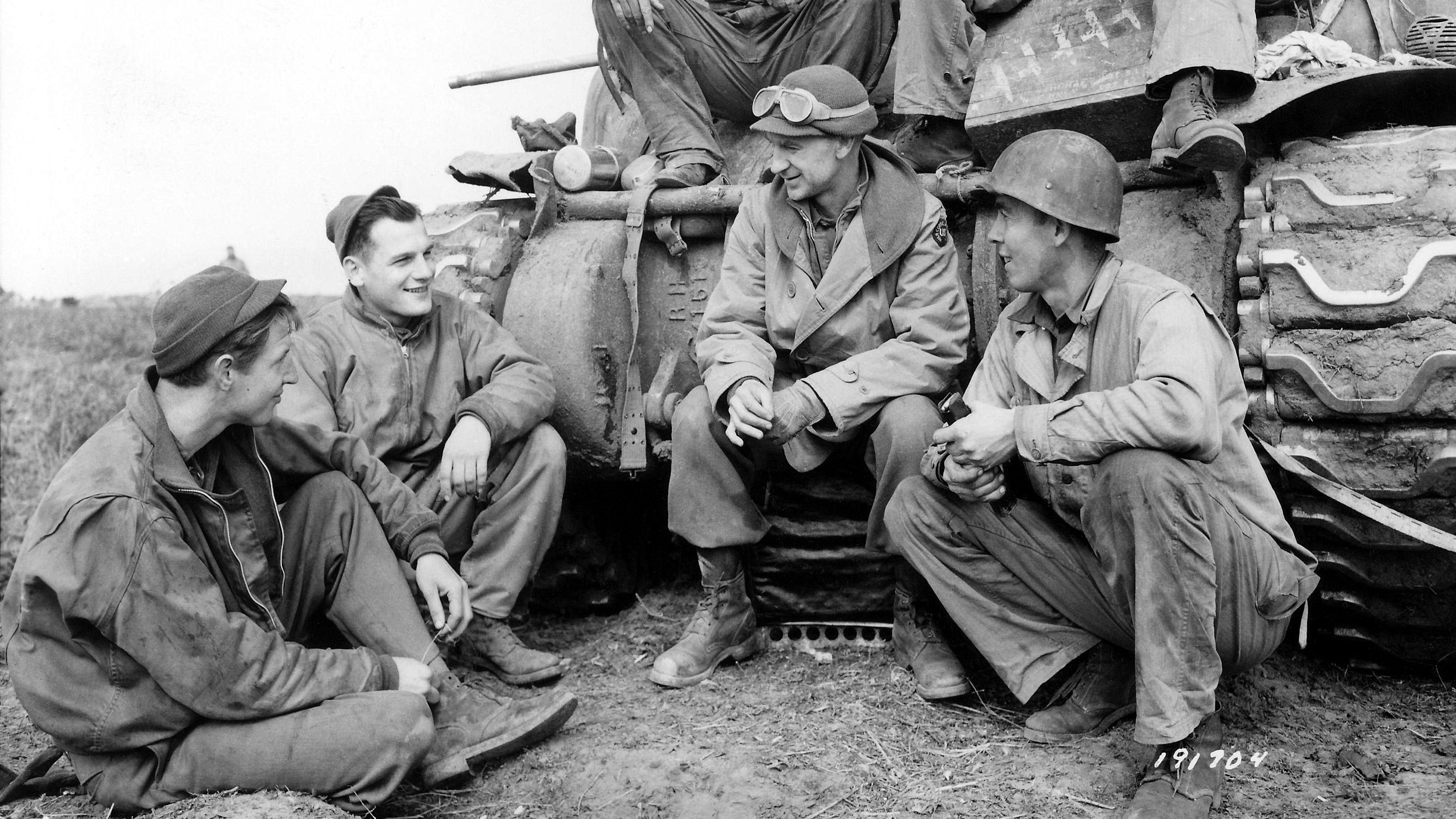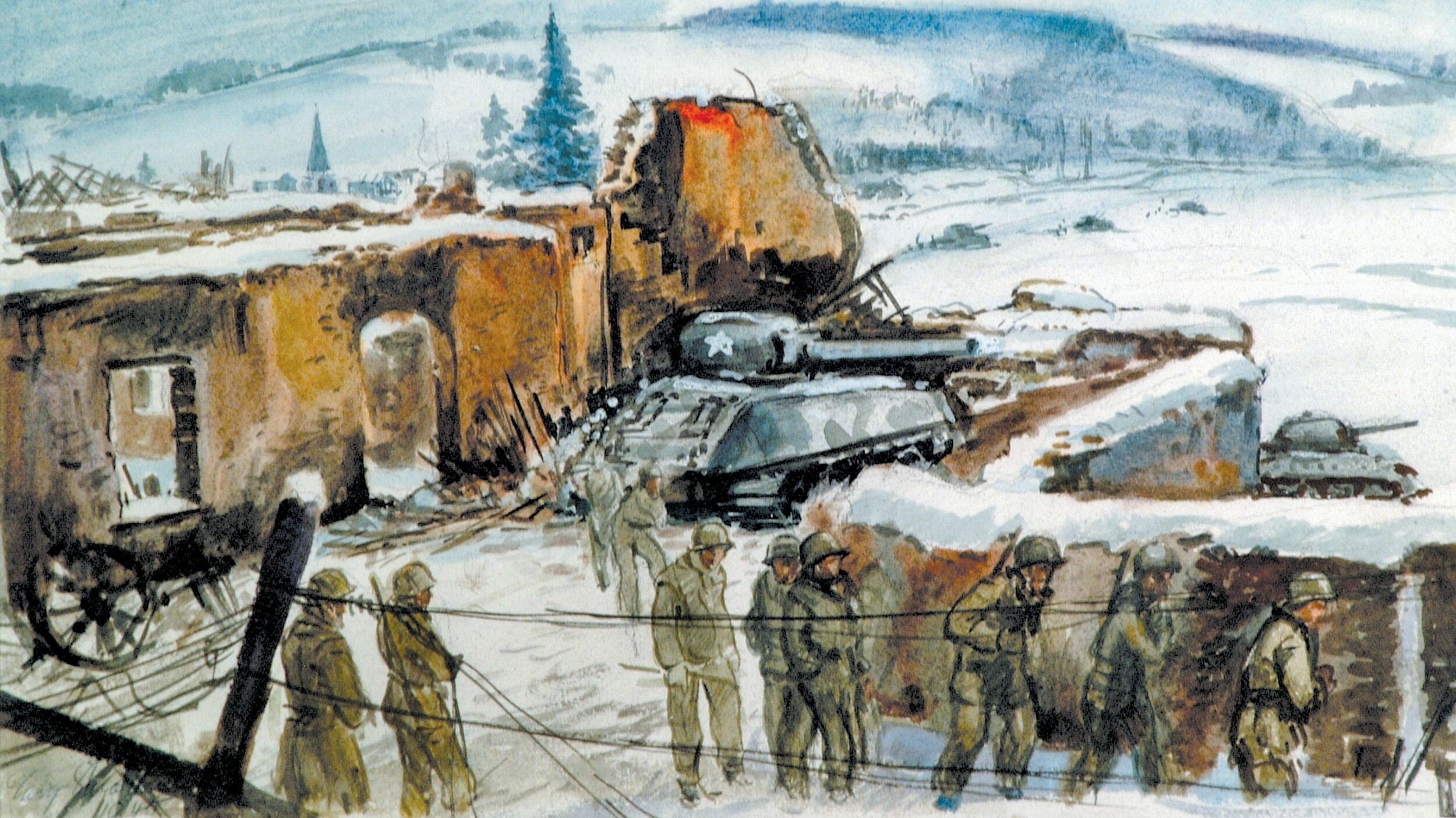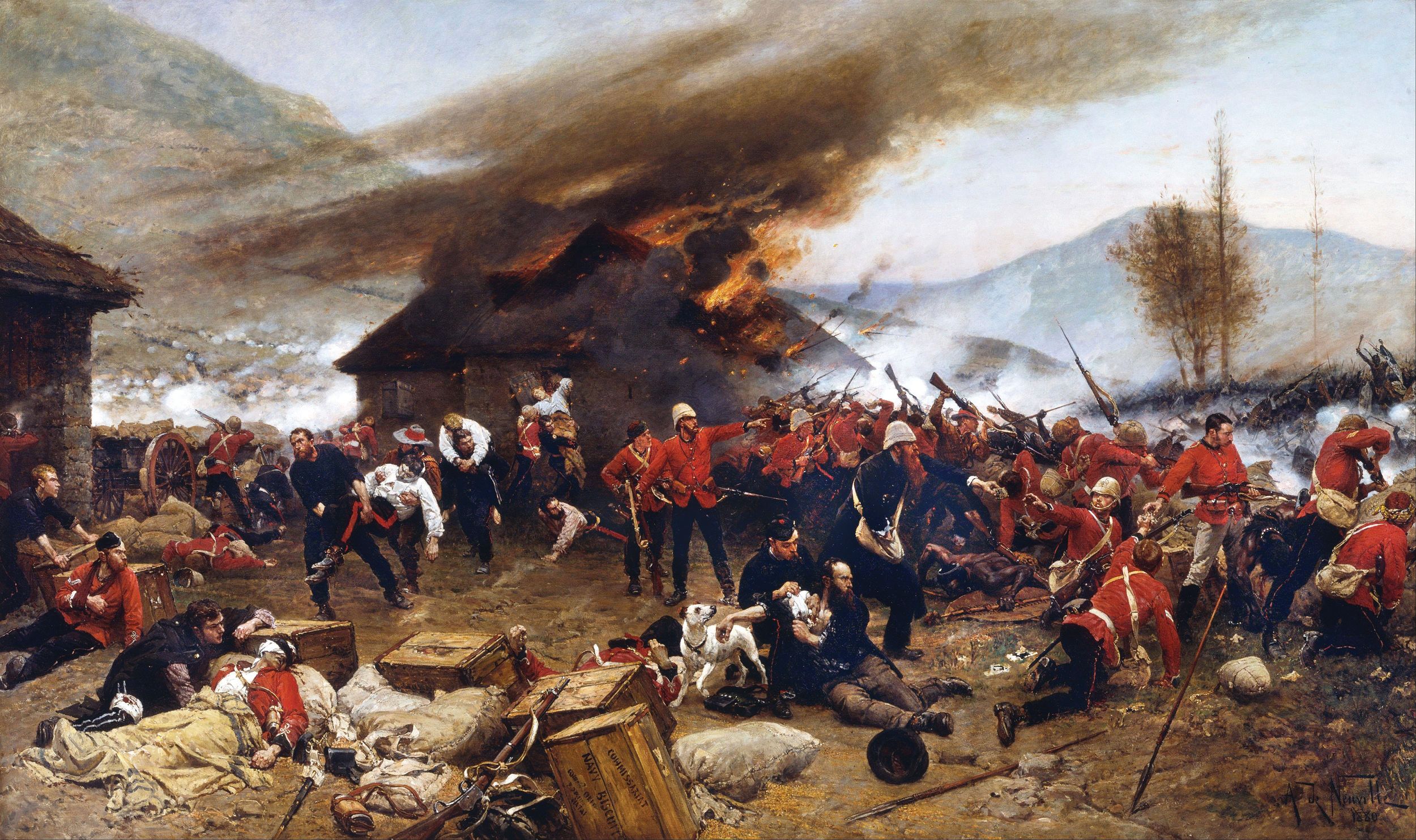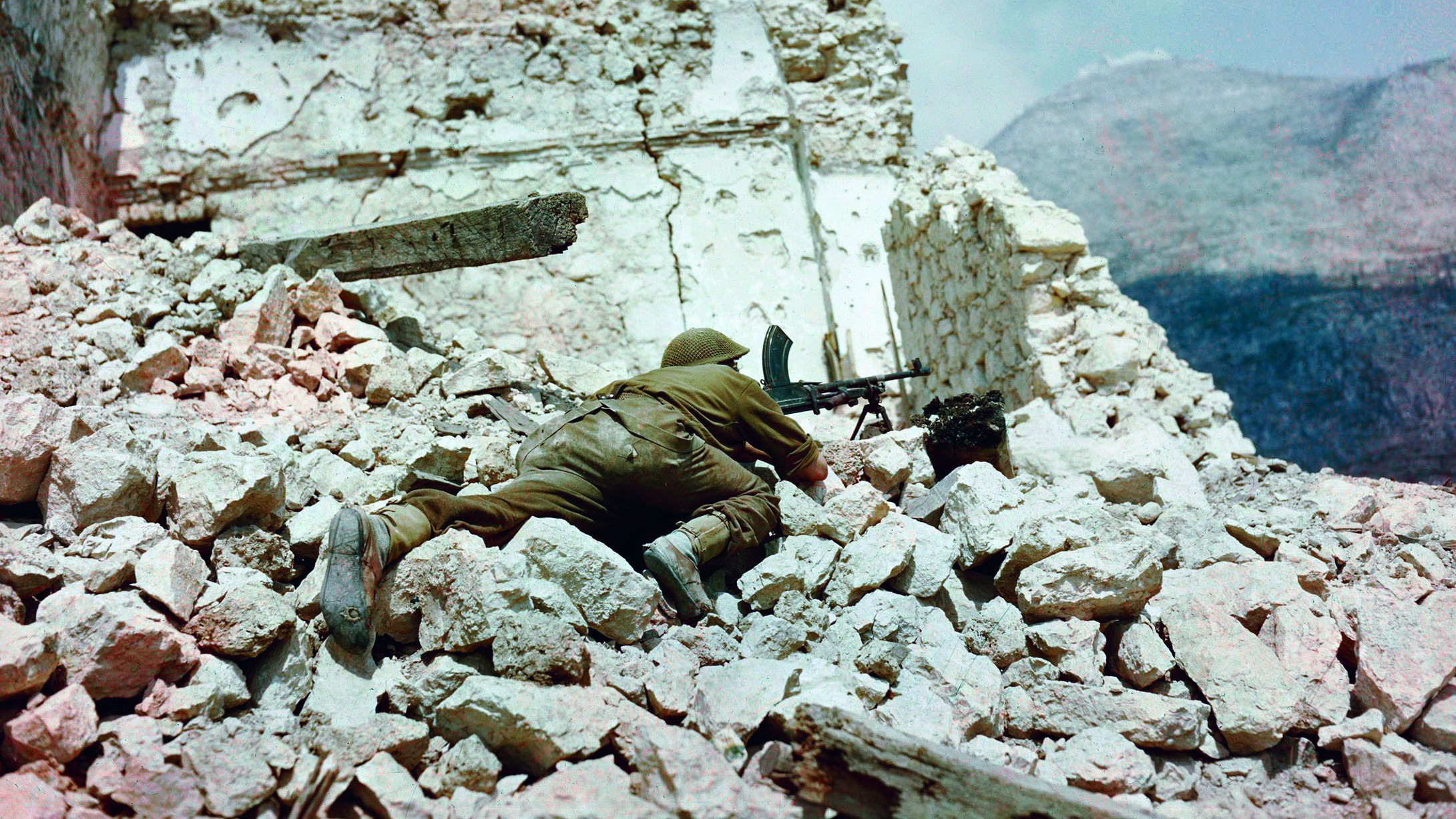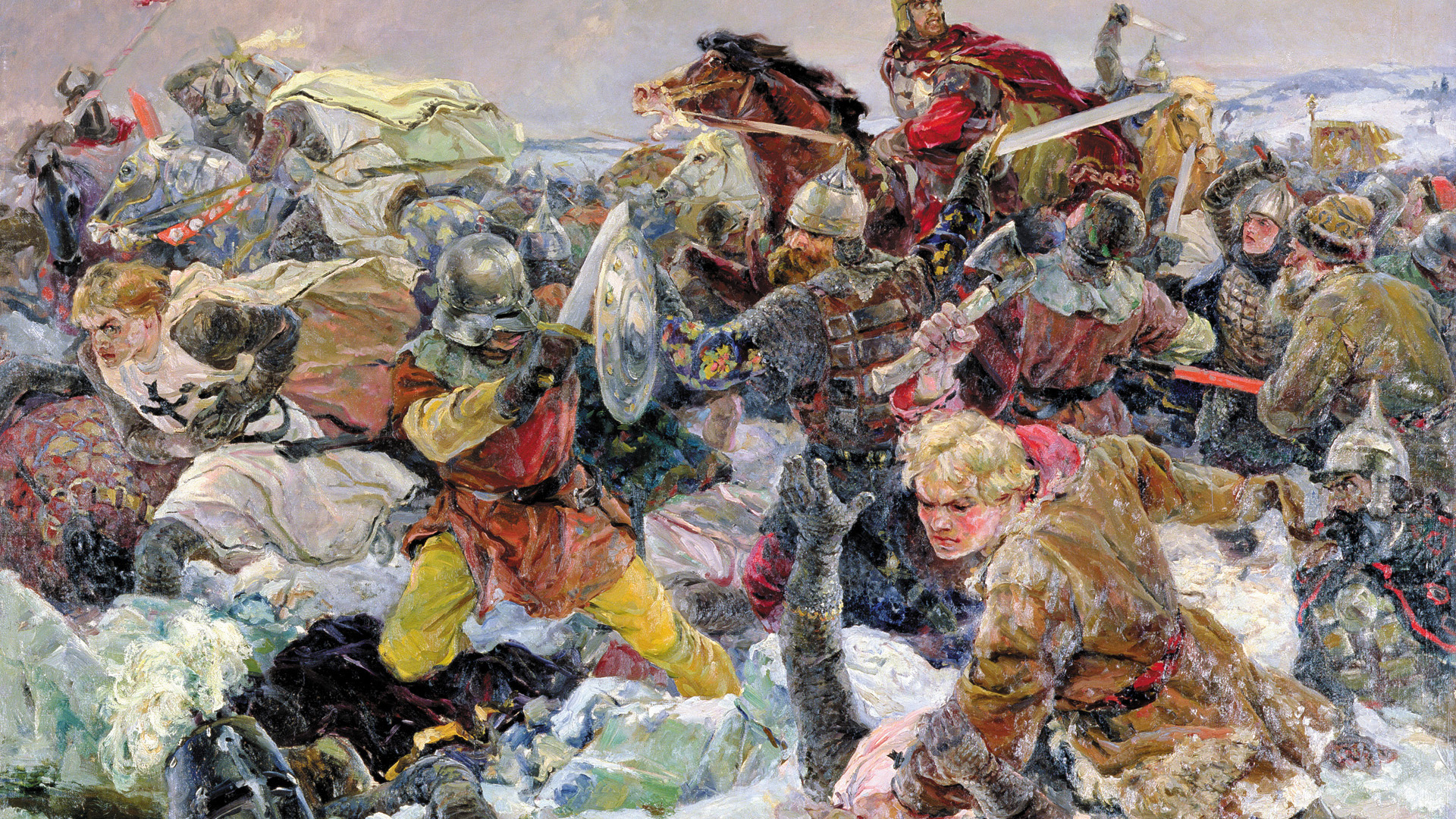By Blaine Taylor
The German Luger is, most likely, the most famous pistol in modern warfare. Almost every World War II movie ever made featuring German armed forces seems to show it as an integral part of its action sequences.
It also played a prominent role in World War I and was carried by the armed forces of many nations. Switzerland’s army used it from 1900 into the 1970s, while the Soviet Army had 8,000 captured Nazi weapons in stock, which were never used. Invented by German arms designer Georg Luger, it was manufactured in at least 10 variants.
Officially described as “a toggle-locked, recoil-operated, semi-automatic pistol,” the Luger was developed to improve upon the Borchardt automatic pistol and was originally known as the Parabellum automatic pistol, Borchardt Luger system manufactured by Deutsche Waffen und Munitionsfabriken (DWM) in its initial production unit, the Model 1900 Parabellum.
Besides DWM, later models were manufactured by W+ F Bern, Simson, Mauser, Vickers, Imperial Erfurt Arsenals, and Heinrich Krieghoff. The Swiss Army the first to adopt it as its official sidearm in May 1900. Had German Kaiser Wilhelm II actually invaded Switzerland as he once playfully threatened, his troops would have been fired upon by weapons of their own making.
The Luger’s Ingenious Design
Modified in 1908 as the 9/9mm Parabellum, the Luger became noted as the weapon for which the 9x19mm Parabellum cartridge was introduced. It is estimated that more than three million Lugers were built during their long service run. Various sub-machine guns had seen valuable and effective trench warfare service during the Great War, with experimentation done as well via pistol conversions into fully automatic hand-held sidearms, among them the P08, in which the Luger displayed a substantial rate of fire.
The Luger was 8.74 inches long, with a barrel length of 4.7 inches (3.9 inches in the short version and 7.9 inches in its artillery version); a weight of one pound, 15 ounces; a rate of fire of 116 rounds per minute in its semiautomatic modality; and a muzzle velocity of 1,148 to 1,312 feet per second in its 9mm short-barrel configuration. With its iron sights, the trusty Luger had an effective firing range of 56 yards in its short-barrel edition, boasting a feed system of an eight-round, detachable box magazine plus a 32-round magazine if needed.
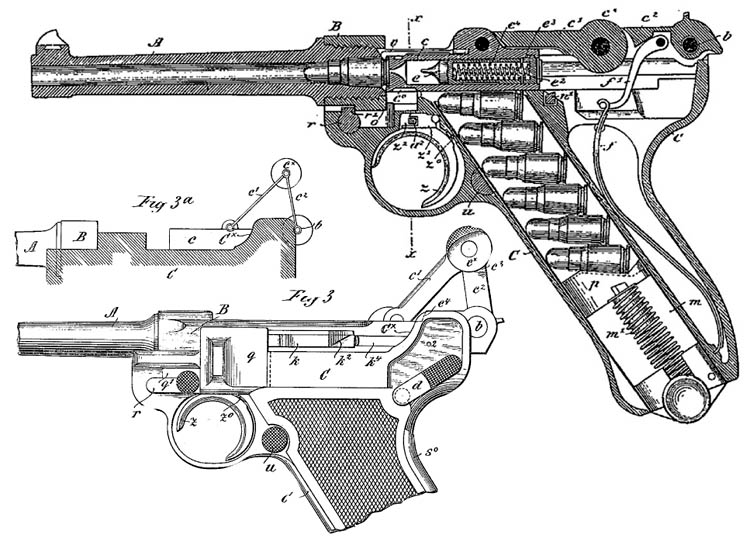
The Story of Georg Johann Luger
Born in Austria at Steinach am Brenner on March 6, 1849, Georg Johann Luger was the son of a surgeon who later moved the family to Italy, where he taught at the Austrian-dominated Padua University, with his son learning to speak Italian as well as German. Following graduation from university preparatory school, young Georg next studied at the Vienna Commercial Academy, later known as the Vienna Business School.
After graduation, Georg Luger enlisted in the autumn of 1867 as a reserve officer cadet in Kaiser Franz Josef’s Imperial 78th Infantry Regiment. He was promoted to officer cadet corporal on June 1, 1868, and then ensign the following October. His surprisingly good pistol marksmanship soon made him an instructor at the elite Austro-Hungarian Military Firearms School at the dual monarchy’s Camp Bruckneudorf, where his intense interest in automatic pistol-loading systems began.
Later establishing himself in a comfortable living as a civilian accountant, Luger wed Elisabeth Josefa Dufek in 1873. The couple had three sons by 1884. The eldest became a civil engineer, joining his father in martial weaponry development, while the second son was killed in 1915 while fighting as an reservist captain against the Imperial Russian Army on the Galician Front during the Great War.
Georg Luger’s business career was aided when he became a manager of Vienna’s top-flight Jockey Club, enabling him to make many important future contacts. One of these was famed gunmaker Ferdinand von Mannlicher, whom he met in 1875. The two were soon working jointly on designs for new rifle magazines. This experience was later credited with helping Luger’s native design abilities to emerge.
Hired in 1891 by the Berlin firm of Ludwig Loewe & Cie, Luger became a consulting engineer as well, and three years later he demonstrated a Hugo Borchardt firearm built by DWM for the U.S. Army. Criticism of the gun led Luger to improve the handgun, from which was born the Parabellum Luger that proved such a financial boon to both him and DWM.
Mechanically and operationally, the famed pistol features a toggle-lock action that employs a locking jointed arm rather than the slide action of many other semiautomatic pistols. After a round is fired, both the barrel and its toggle assembly move backward in recoil, with both locking together.
The toggle hits the built-in cam in the Luger’s frame, making the knee joint hinge, with the toggle and assembly then unlocking. Striking the frame, the pistol’s barrel halts its movement to the rear, while the toggle keeps moving, bending the knee joint, extracting the fired casing from the chamber and ejecting it. Following this action, the toggle and breech jointly come forward via tension by spring, with the next round fed from the magazine to the empty chamber. The entire operation is completed in a fraction of a second.
The Luger works well with cartridges of higher pressure. Those of lower pressure may cause the pistol to malfunction, as not enough recoil occurs for the action to be completed, causing breech blockage by not clearing the magazine’s top-most cartridge or jamming on its base.
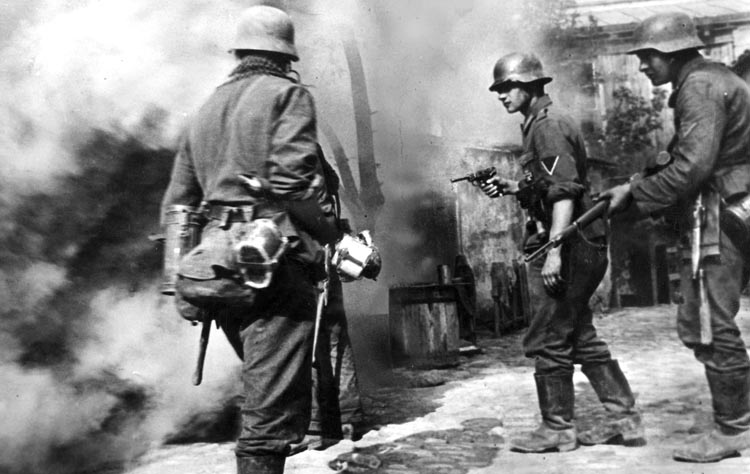
Due to both German- and Swiss-made Lugers being manufactured with the era’s highest quality materials and the manufacturers use of precision tolerances with tough, minute standardization, the Luger was world renowned for its durability. Indeed, its design mandated the manual fitting of some parts for proper functioning. Assembling a pistol using another weapon’s side plate at times stopped its sear—the catch that holds the hammer of the gun’s lock in the cocked or partially cocked position—from operating properly, causing the weapon to malfunction.
Fixing the Luger’s rigidly positioned barrel to the barrel extension and front sight carriage provided its famous, superb accuracy. It has generally been reputed to be one of the most accurate of auto-loading pistols, making it preferred over any other revolver or pistol of its time.
This led to the Model 1900 and Swiss Lugers being designated as the selected firearm for officers, non-coms, and even cavalry of Germany, the United States, and Switzerland. Its first reported combat service was against Chinese irregular forces during the 1900 Boxer Rebellion at the imperial capital of Peking.
The U.S. Army’s Board of Ordnance bought 1,000 Model 1900 Parabellums with 4.75-inch barrels after initial test firing at its Springfield, Illinois, armory on April 16, 1901. These were duly marked with both iconic American Eagle stamps over their chambers and with the customary American ordnance bomb proofs, then provided to all Army cavalry troops for more rugged field trials.
What remained from that initial batch was issued to light artillery troops and officers at the U.S. Military Academy at West Point. More purchases came in 1902, and additional test firing took place in 1904, leading to numerous other nations buying the weapon. Large quantities of commercial models were exported until World War I.
Over time, the so-called Borchardt-Luger nomenclature evolved into the more popular and simpler Luger in its international marketing and advertising. As with the later American-made Thompson sub-machine guns, lawmen and outlaws alike soon made the Luger a deadly weapon of choice.
The neutral Swiss Army adopted the Model 1900 as its standard sidearm on April 4, 1901, giving way in 1906 to a variation of the earlier model. This 1906 variant was made and assembled in Bern, Switzerland, in 1918.
In 1929, the Swiss improved their version with better sights, a better trigger, and a tougher toggle link. This model endured into the 1960s, despite the introduction of a new military sidearm in 1948.
In 1904, the Imperial German Navy brought into service the Pistole 1904 Parabellum 9mm sidearm, also known as the Marine Model 1904. Its name was shortened by U.S. seamen to the Navy Luger, and it was improved in 1906 with the addition of a coiled mainspring.
That same year, Georg Luger introduced the New Model, which substituted the former flat, laminated mainspring with an updated and more reliably designed coil. Lugers were thereafter all designated New Models, with their older brethren brought up to the novel specifications as well. A carbine version with a rifle-like stock was introduced along with an artillery version that featured both a removable stock and a 32-round Trommelmagazine 08, popularly known as the snail drum magazine.
More American pistol trials followed in 1907, after which both Luger and DWM refused the Army’s request to manufacture 200 Lugers firing .45-caliber ammunition to compare with both Colt and Savage pistols. As a result, the German firm deserted the competition.
More than a Million German Lugers in Combat in World War I
After further German modifications for the Imperial German Army in 1908, the now famous Luger served throughout World War I, with more than a million seeing combat. (Read more about the Great War and the events that shaped the twentieth century inside Military Heritage magazine.)
In addition, the artillery Luger 08 was authorized by Kaiser Wilhelm II on July 2, 1913, its stock making it a substitute carbine in combat.
Prior to the installation of fixed, mounted machine guns in German fighters, pilots fought the enemy with Lugers in aerial combat. As machine guns replaced them in the air, so too did MP18 sub-machine guns in ground combat, with postwar exportation of the now globally famous Lugers continuing into the 1930s.
During the interwar period, many knockoff Lugers were manufactured for U.S. import by Abercrombie & Fitch, A.F. Stoeger, Inc., and the Pacific Arms Co., reportedly with AFS successfully registering the name Luger in North America by 1929.
Allegedly, these AFS models became the first to have the name Luger stamped on the receiver’s side. The following year, the Mauser firm acquired the manufacturing rights from DWM, six years after the death of the pistol’s original designer, Georg Luger.
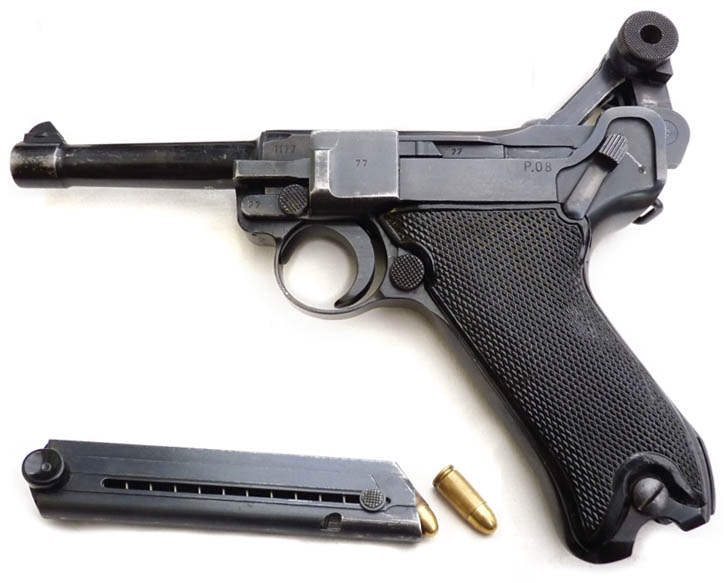
By 1941, Mauser had begun “salting blue” the entire weapon and installing cheaper black Bakelite handgrip panels to reduce both cost and production time. As a postwar marketing gimmick, one American arms merchant dubbed them “Black Widow Lugers.”
World War II and Beyond
During the Nazi era, the regular army and Adolf Hitler’s elite Waffen SS used the renowned Luger until their defeat in 1945. Mauser continued wartime production in Nazi Germany into December 1943. A Luftwaffe version by Heinrich Krieghoff and Son was augmented staring in 1935. That firm’s second-bid contract of 15,000 units ended production in 1944, but the regular army had already received its final 1,000 pistols in November 1943.
Ironically, the German Army refused to accept any more Luger units before war’s end, with the last 4,000 assembled in December 1944 being sold as the renamed Model 943 to neutral but right-wing Portugal. Thus, the war’s end on May 8, 1945, resulted in the Oberndorf, Germany, factory boasting a large excess of parts stocks.
Just like the British Army restarted the captured Volkswagen factory to produce its German occupation army’s staff cars, so also the French empowered Mauser to furnish their infantry and military police with needed sidearms during 1945-1946. The French then relocated German production personnel to metropolitan France, where an estimated 4,000 French Lugers were manufactured.
As late as 1970 the National Police were armed with these captive Lugers. Both Soviet Army MPs and East German People’s Police followed suit on their own side of the Berlin Wall.
Bootleg “Lugers” turned up in the postwar United States as well. In 1986, Mauser Luger production at Oberndorf finally ceased four decades after World War II, with units assembled from stock parts on hand still appearing into the 1990s.
The Luger continued to be highly valued as a sidearm even as late as the Vietnam War, with the Vietnamese producing their own knockoffs to arm the Viet Cong and “other irregular forces.”
Legends die hard, it seems.
Blaine Taylor wore an American-made .45-caliber Colt Model 1911 pistol as his personal MP sidearm while under enemy fire during the Vietnam War in 1967. He later also test-fired the Beretta 92 SBF at the Connecticut State Police Range after the Beretta’s replacement of the Model 1911.
